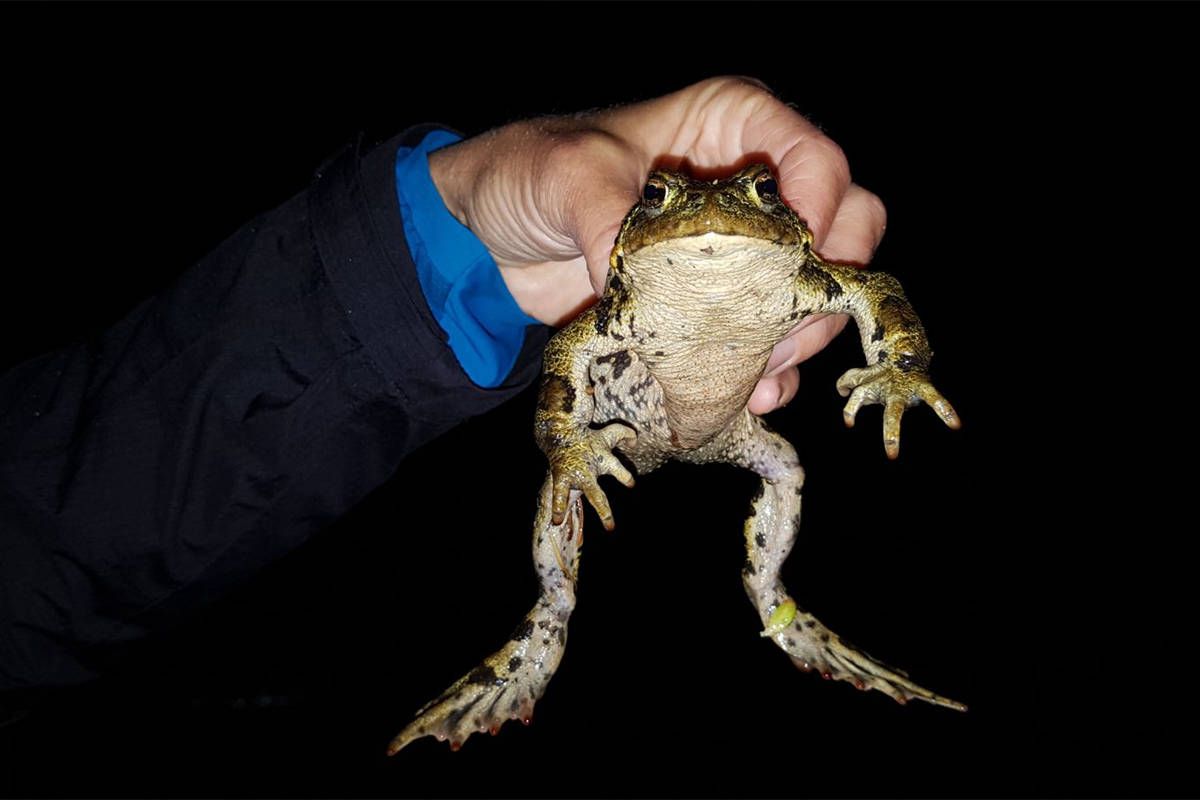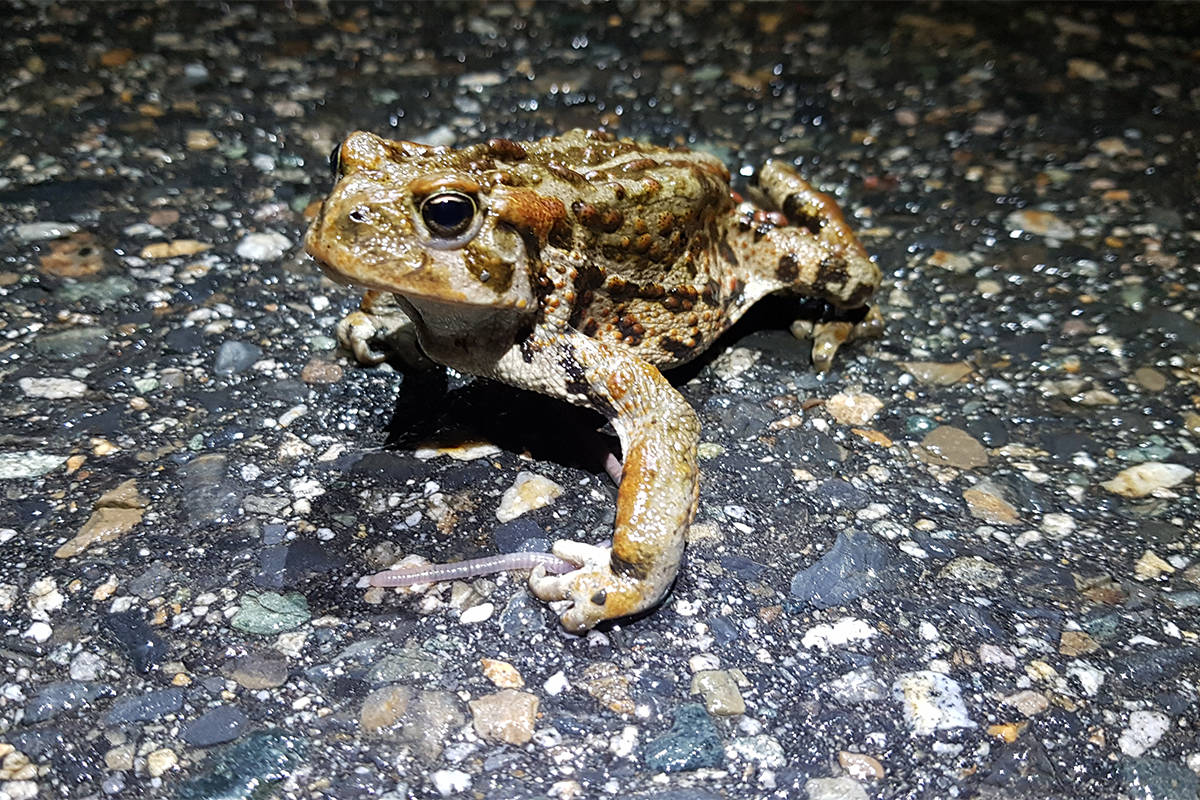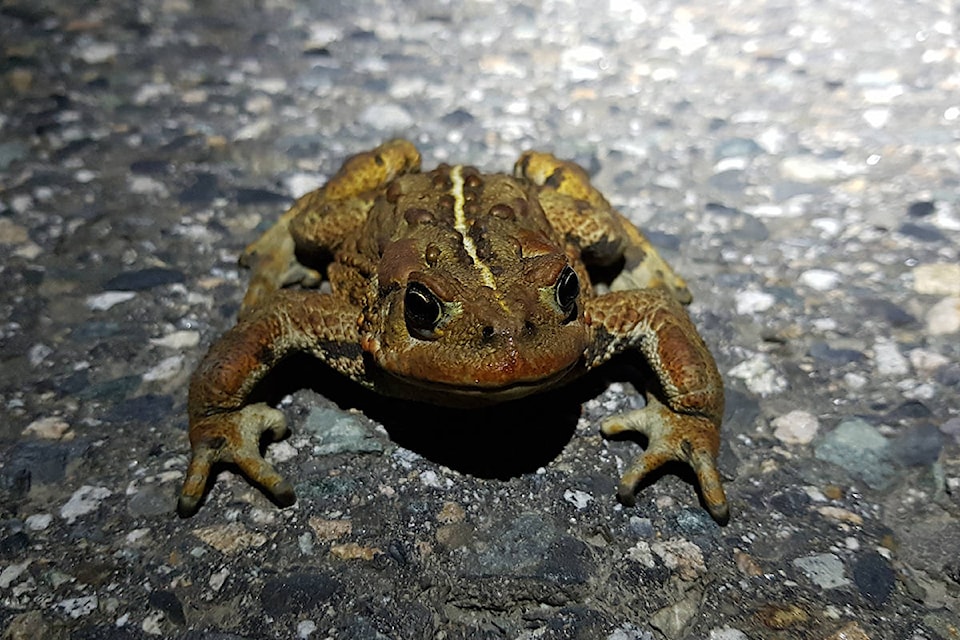Saving toads isn’t easy.
“If they were wildebeests, we’d have done something already,” says Marcy Mahr, a biologist with Valhalla Wilderness Society.
Mahr addressed roughly 20 people at the third Cred-Talk at the Community Centre in Revelstoke on Jan. 9. The talk focused on keeping western toads off Highway 31A. The project started in 2015.
READ MORE: ‘Every forest tells a story’: CRED Talks return to Revelstoke
The western toad is internationally listed as Near Threatened by the World Conservation Union and is federally listed as a Special Concern by the Committee on the Status of Endangered Wildlife in Canada. B.C. is currently the “global keeper” of western toads.
“We don’t know how many toads are left,” says Mahr.
“They are very hard to track. This project is about trying to keep them from dying.”
READ MORE: B.C. filmmaker wins Wildlife Oscar for toad documentary
Each spring, western toads migrate across a two kilometre stretch along Highway 31A between Fish and Bear lakes. The two lakes are roughly halfway between New Denver and Kaslo. With its shallow shore, Fish Lake is particular important for breeding.
“Fish Lake is the primary breeding area nursery for toads,” says Mahr.
| Last year, volunteers were able to save 562 adult toads. Since the project started in 2015, the group says they have saved 1660 toads and 100,000 of toadlets. (Submitted) |
In the spring, each night, toads are squashed by traffic, including females that each carry over 12,000 eggs. In the summer, thousands of tiny toadlets, which are small enough to fit on the tip of a thumb, cover the road. Resulting in thousands dead.
“The highway is a popular spot for tourists. They like to be there during the exact time when toads migrate across the road,” says Mahr.
The difficulty is protecting the toads as they cross the highway. The ideal solution is to have toad tunnels that go under the highway that are specifically designed for amphibians. There are four culverts that cross under the road, but so far they are rarely used by toads.
In one, Mahr says they thought the culvert was maybe too dark for the toads. So researchers strung up party lights and LEDs in an attempt to attract the toads.
“But the toads didn’t come to the party,” says Mahr.
Mahr says they may have to build a new tunnel.
| The western toad is internationally listed as Near Threatened by the World Conservation Union and is federally listed as a Special Concern by the Committee on the Status of Endangered Wildlife in Canada. (Submitted) |
Last year, volunteers were able to save 561 adult toads. Since the project started in 2015, the group says they have saved 1600 toads and 200,000 of toadlets.
Although traffic presents a serious threat to the toads, Mahr says the Ministry of Transportation and Infrastructure has not supported putting up road signs.
The Review reached out to the Ministry and got an email response, “given low traffic volumes, and irregular migration timing and numbers, a warning sign for this purpose would have very limited impact in changing driver behavior, so we are focussing on the other protection measures.”
Other protection measures include, “local ministry staff have worked closely with volunteers in the past at the Fish Lake Rest Area to limit the public impact during the toadlet migration, including closing a boat-access area, retaining an unmowed area in the rest area and permitting directional fencing to direct toadlets under the existing bridge near a migration site.”
Mahr says when the highway is repaved, whenever that might be, she would like to see toad tunnels and more permanent fencing. The ultimate goal of the project is to identify where new road tunnels should be built based on what she calls “cossing and mortality hotspots”.
“Short of people not driving, we need to build fences and underpasses,” says Mahr.
CRED Talks are organized by the Columbia Mountains Institute of Applied Ecology. CRED stands for Columbia Region Ecological Discussions and the event is sponsored by Revelstoke Credit Union. This is the third season of the talks. The next CRED Talk is scheduled Feb. 20 on BC’s Whiskyjacks. Check the Columbia Mountains Institute of Applied Ecology for more information and details on upcoming presentations: http://cmiae.org/event/cred-talks-columbia-region-ecological-discussions/
@pointypeak701
liam.harrap@revelstokereview.com
Like us on Facebook and follow us on Twitter.


